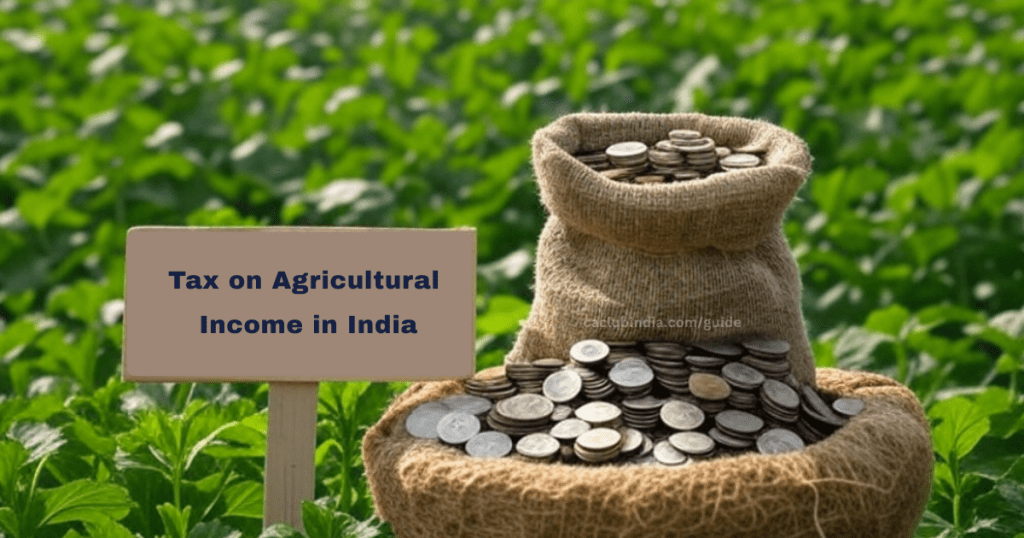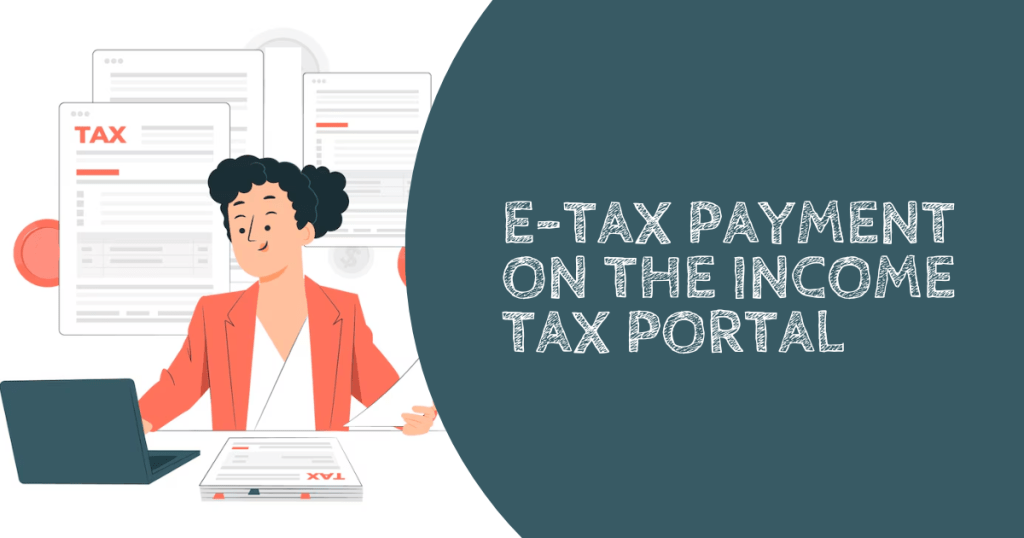Agriculture is a vital sector in India, playing a significant role in the country’s economy. Recognising its significance, the Income Tax Act, 1961 offers specific exemptions and deductions for agricultural income.
While agricultural income is typically exempt from taxation by the Central Government, this exemption comes with important qualifications. Certain situations may arise where agricultural income affects overall tax calculations, creating potential indirect tax implications.
Definition
As per Section 2(1A) of the Income Tax Act, agricultural income comprises:
A. Direct Agricultural Income
- Rent or revenue generated from agricultural land situated in India.
- Earnings from agricultural activities, such as cultivation, processing, and selling farm produce.
- Income derived from farm buildings used for agricultural purposes (e.g., storage).
B. Indirect Agricultural Income
- Profits from the commercial sale of agricultural produce (e.g., tea, coffee, rubber).
- Exception: For tea, coffee, and rubber plantations:
- Tea: Only 60% qualifies as agricultural income; the remaining 40% is taxable as business income.
- Coffee/Rubber: Only 75% is treated as agricultural income; the balance 25% is taxable as business income.
Non-Agricultural Income (Not Exempt)
- Income from poultry, dairy, fisheries, or bee-keeping (unless directly connected to farming operations).
- Earnings from land development contracts or real estate transactions (even if the land was previously used for agriculture).
Taxability of Agriculture Income
- Fully Exempt under Section 10(1): Income earned from agricultural activities in India is not taxable under the Income Tax Act.
- Exception: If agricultural income is integrated with non-agricultural income for rate purposes (explained later).
Taxation of Agricultural Income + Non-Agricultural Income
Tax Treatment When a Taxpayer Has Both Agricultural and Non-Agricultural Income.
While agricultural income is exempt from tax, it may still impact the tax slab rate for non-agricultural income. Here’s how the calculation works:
- Add agricultural income to the taxpayer’s total income (including nonagricultural income).
- Calculate tax on the total income (agricultural + non-agricultural).
- Calculate tax on (non-agricultural income + basic exemption limit).
- The final tax payable is the difference between the tax computed in Step 2 and Step 3.
Example
- Non-agricultural income: ₹8 lakh
- Agricultural income: ₹5 lakh
- Total income: ₹13 lakh
- Tax on ₹13 lakh: As per slab rates.
- Tax on (₹8 lakh + ₹2.5 lakh basic exemption): Lower tax.
- Final tax payable: Difference between the two.
Tax Benefits for Agricultural Income
Full Exemption for Agricultural Income
- As per Section 10(1), pure agricultural income is completely tax-free
Special Cases for Processed Goods
- Tea/Coffee/Rubber growers get partial exemption (60%/75% treated as agri-income)
Farm-Related Deductions
- Expenses on seeds, fertilizers, equipment maintenance are deductible
- Interest on loans for agricultural purposes may qualify for deduction
Land & Infrastructure Benefits
- Income from farm buildings used for storage/processing is exempt
- Revenue from leased agricultural land qualifies as exempt income
Non-Qualifying Activities
Income from animal husbandry and related activities:
- Poultry farming
- Dairy farming
- Bee-keeping
- Fisheries
(Unless directly connected to agricultural land operations in a specific manner)
Processed agricultural products
- Income from highly processed goods (e.g., fruit juices)
- When processing goes beyond ordinary methods to make produce marketable
Timber-related income
Sale of timber trees (Unless the trees were specifically cultivated as part of farming operations)
Non-agricultural use of farmland
Rent from agricultural land used for non-farming purposes (e.g., as a filming location for TV/movies)
Corporate agricultural income
Dividends from companies engaged in agricultural operations (Not considered personal agricultural income)
Urban land income
- Income from land in urban areas
- When the land isn’t assessed for:
- Land revenue, or
- Local rates by government authorities
Reporting Agricultural Income in ITR
Even though agricultural income is exempt, it is crucial to report it in the Income Tax Return (ITR) to ensure compliance.
- If the agricultural income is up to ₹5,000, it can generally be reported in ITR-1.
- If the agricultural income exceeds ₹5,000, ITR-2 must be filed.
- Proper documentation, such as land ownership proof, income details (sale statements), bank statements, and records of cultivation expenses, should be maintained to support the claim of agricultural income.
Setting Off Losses for Assessment Year 2025-26
Rule 8(1) explains how agricultural losses incurred from previous years can be used to offset agricultural income in the year starting April 1, 2025.
If you have agricultural income in the FY 2024-25 (relevant to the assessment year 2025-26) and you had losses in agricultural income in any of the previous years, you can use those losses to reduce your taxable agricultural income for AY 2025-26.
Which Losses Can Be Set Off?
The losses from the previous years can be carried forward and set off, but only such losses that has not been set off against the agricultural income in earlier years:
| Assessment Year | Loss not yet set off against agricultural income from |
| AY 2017-18 | AY 2018-19 to AY 2024-25 |
| AY 2018-19 | AY 2019-20 to AY 2024-25 |
| AY 2019-20 | AY 2020-21 to AY 2024-25 |
| AY 2020-21 | AY 2021-22 to AY 2024-25 |
| AY 2021-22 | AY 2022-23 to AY 2024-25 |
| AY 2022-23 | AY 2023-24 to AY 2024-25 |
| AY 2023-24 | AY 2024-25 |
| AY 2024-25 | Loss can be directly computed in AY 2025-26 |
Restrictions on Claiming Losses
Only the assessee incurring the loss can claim the set-off, successors cannot claim it.
Succession Rule
If someone else takes over your agricultural income source (such as- selling or transferring) the new person cannot use your past losses to offset their income.
Only the person who originally incurred the loss can use it.
For example, if you had a loss in AY 2019-20 and sold your farm in 2023, the buyer can’t use your 2019-20 loss in later year.

FAQs
Agricultural income in India refers to earnings generated from various farmingrelated activities, including crop production, animal husbandry, poultry farming, and horticulture. It also encompasses income derived from renting out agricultural land, selling harvested crops, and managing timber or forest produce.
To verify agricultural income, you may need to provide the following documents: Land Ownership Proof: These documents establish your ownership or rights over agricultural land, such as sale deeds, lease agreements, or official land records.
Key agricultural products—including grains, fresh fruits, and vegetables—are exempt from GST. This exemption ensures affordability for consumers and prevents taxation on farmers’ basic produce.
If you have only agricultural income up to ₹5,000, you can select ITR-1.
Including Agriculture + Non Agriculture, you can select:
ITR-2 : Salary + Interest Income + Capital Gain + Agricultural Income.
ITR-3 : Business Income + Interest Income + Capital Gain + Agricultural Income.
Rule 8 deals with how a person being assessed for tax can use losses from agricultural income in previous years to offset their agricultural income in a later year.


